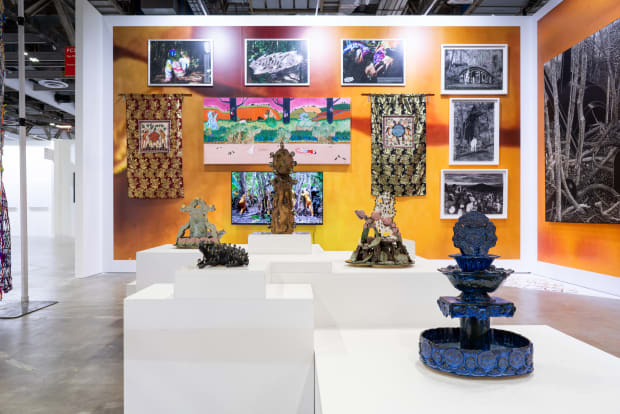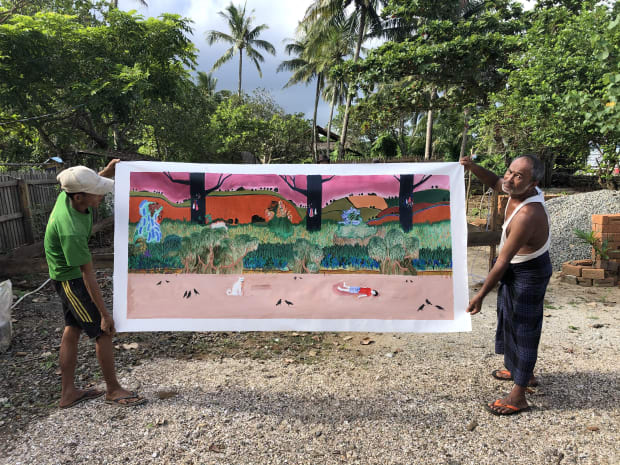-
-
“Those who first named and depicted the region as a whole wrote, without realizing it, a kind of science fiction, in which “Southeast Asia”, like “spaceship”, labeled something that did not exist – but eventually would.”- Donald K. Emmerson
Life in a spaceship, or as a conjurer of unicorns, can be confusing. Donald Emmerson, writing in the 1980s, applied several fanciful analogies to the idea of Southeast Asia as an unitary entity. He likened the notion to a spaceship, hovering in an equally imaginary science-fictional universe; he remarked that “an observer of “Southeast Asia” who uses the name incautiously risks hallucinating unicorns: projecting homogeneity, unity, and boundedness onto a part of the world that is in fact heterogeneous, disunited, and hard to delimit.” (1) And, indeed, the disparate nation-states that are today commonly understood to comprise that neck of the woods that lies east of India and south of China – the directional half of its toponym alluding to a supposedly centralized zone of the Asian continent – seems to have little to bind it together, aside from the auspices of the Association of Southeast Asian Nations (ASEAN). “Do they”, it has been asked of these entities, “have anything in common other than geographical contiguity?” (2) In other words, are we just projecting UFO- and unicorn-shaped fantasies onto that part of the atlas that stretches from Manila in the north to Jakarta down south, from Myanmar in the west to the Indonesian province of Papua Barat eastward, encompassing the gamut from the indigenous highland communities of Indochina to the massive Malay-speaking populations of former Dutch and British colonies? (3)
There are linking threads, of course. Much of Malaysia, Indonesia and the Philippines speak Austronesian languages that are believed to have descended from a common ancestor, while the languages of the Austroasiatic Mon-Khmer group, including Vietnamese and Khmer, are spoken throughout mainland Southeast Asia and South Asia. Additionally, according to Anthony Reid, two other major factors have shaped a shared heritage: a physical environment that supported intensive rice cultivation, and intra-regional commercial exchanges enabled by extensive waterways and the sea. (4)
-
-

-
Quynh Dong’s video adopts the compositional effect of Vietnamese lacquer painting, staging green and gold dancers amongst a grove of banana trees, while Fyerool Darma’s Kitschmensch is a patchwork of textiles that boast anodyne, touristic images of Southeast Asia, sutured into a confabulation worthy of a kitschy space sojourner. Maryanto highlights the exploitative relationship between the natural ecosystem, and development and mass tourism in Indonesia, turning the iconography of the Mooi Indies on its head; Wei Leng Tay defamiliarizes photographs of interiors to complicate sentimentality and nostalgia, foregrounding instead the fact of estrangement from one’s own genealogies and cultural inheritance. Citra Sasmita channels the visuality of Kamasan painting from Bali into ecofeminist images, paralleling Filippo Sciascia’s repurposing of found objects into sculptural hybrids. Maung Day depicts the quotidian yet jolting reality of senseless death, located amidst the lush verdure of rural Myanmar, a country trapped in the throes of continuing political violence; Shayne Phua’s unorthodox, alien-esque ceramic fountains restore water to a medium the final instantiation of which has purged itself of moisture. Finally, Santi Wangchuan’s woven panels immediately recall the hand-crafted products of traditional cottage industry, reimagined as bizarrely vibrant, polychromatic objects, the day-glo palette a testament to little more than cultural optimism.
-
Here are visions of lands lush with the life of despoiled landscapes, impaired images, reanimated matter and revivified pictures – what the Greeks and Romans sang of as the Golden Chersonese, the aureate, arcane Suvarnabhumi of Sanskrit and Pali literature, the Land of Gold that lies beneath the whistling of the winds in the seas south of Cathay and east of Jambudvipa. Here is a collection of outlandish objects and curious pictures, wondrously strange and foreign, indeterminate and interstitial, lingering on at the borders between acknowledgement and manipulation, between the pre- and the post-, sobering reality and surreal fantasy. Here are fables of the faux and songs of the synthetic, interbred relics that loiter at the crossroads of narratives and projections and bodies and materialities that impersonate the past and fictionalize the present(s) of Southeast Asia.
-

Citra Sasmita, Fountain of Purification, 2022, Acrylic on Kamasan canvas
-
 Filippo Sciascia, Lumina Mense, 2014, Photography and paint on Chinese wood sculpture
Filippo Sciascia, Lumina Mense, 2014, Photography and paint on Chinese wood sculpture -

Kitschmensch with many failed flags of 1963 Maphilindo Condeferation (Reworked), 2022, Chinese ink on polyfibres, synthetic fibres, cotton, polycotton, taffeta, silk, metal, fibreglass, on aluminium brace and 3M carbon fibre on aluminium
-

Maryanto, Anthropogenic, 2019, Acrylic on canvas
-
 Maung Day, Dog Found the Murdered Body of His Master on the Beach, 2022, Acrylic on Canvas
Maung Day, Dog Found the Murdered Body of His Master on the Beach, 2022, Acrylic on Canvas -
-
QUYNH DONG
(b. 1982, Vietnam)Quynh Dong’s video piece, In the Banana Forest, folds together multiple folkloric concepts, an ongoing examination of stereotypes of Vietnamese and Asian cultures. Its narrative draws from Vietnamese writer Nguyen Tuan’s novel, “Vang bóng một thời” (“Echo and Shadow Upon a Time”). In a scene that is almost dreamlike, gold-green-clad Butoh dancers sway and dance amongst banana trees. The work combines elements of dance, music, literature, sculpture and painting into an image of stereotypical Asian culture. It was also inspired by Japanese author Junichiro Tanizaki’s essay on aesthetics, “In Praise of Shadows”, in which he muses on light and shadow as metaphors for Western and Asian cultures respectively, and about the manner in which shadows bring out the sheen of gold. Dong relates this to the use of gold in Vietnamese lacquer paintings, where the material is often juxtaposed against dark wood. The costumes of the performers in this video are both an homage to Vietnamese lacquer paintings, especially that of Nguyen Gia Tri, as well as Tanizaki's reflections.
-
-

Santi Wangchuan, Color of Life (No. 2), 2022, Rope, thread, fibre, antique weaving tools,wood
-

Shayne Phua, Queen Dogū Venus, 2023, Ceramic
-

Wei Leng Tay, Revisited (“Grandaunt” home in Ipoh and Penang, 2010, on Kodak E100VS, 120mm), 2022, Archival pigment print
-
NOTES
(1) Donald K. Emmerson, “Southeast Asia”: What's in a Name?”, Journal of Southeast Asian Studies, vol. 15, issue 1 (March 1984): 1–21. See p. 1.
(2) Paul H. Krastoska, Remco Raben and Henk Schulte Nordholt, “Locating Southeast Asia” in Locating Southeast Asia: Geographies of Knowledge and Politics of Space, eds. Krastoska, Raben and Nordholt (Singapore and Athens, Ohio: Singapore University Press and Ohio University Press, 2005), pp. 1–19. See p. 1.
(3) The instrumentalization of Southeast Asia as a conceptual phenomenon is generally attributed to Allied efforts during the Second World War. For a concise recounting, see Russell H. Fifield, “Southeast Asia as a Regional Concept”, Southeast Asian Journal of Social Science, vol. 11, issue 2 (1983): 1–14.
(4) Anthony Reid, Southeast Asia in the Age of Commerce, 1450–1680, Vol. I: The Lands below the Winds (New Haven: Yale University Press, 1988), pp. 5–7.
(5) Krastoska et al. See p. 11.
Spaceships and Unicorns: by Curator Louis Ho
Past viewing_room










